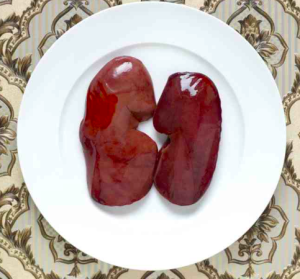Hepatitis A is a commonly known pathogen in the food safety world – hepatitis E isn’t. There have been a few papers detailing illnesses and outbreaks linked to the uncommon viral pathogen (mostly all out of Europe and Asia).The November issue of Emerging infectious Diseases has a paper that shows high prevalence of hep E in French raw pork liver products (used by some fancy restaurants).
Frequent hepatitis E virus contamination in food containing raw pork liver, Franc
Emerging Infectious Diseases, Volume 20, Number 11, November 2014
Nicole Pavio, Thiziri Merbah, and Anne Thébault
http://wwwnc.cdc.gov/eid/article/20/11/14-0891_article
Highlights:
Food products containing raw pork liver are suspected to be vehicles for transmission of hepatitis E virus. Four categories of food products, comprising 394 samples, were analyzed to determine hepatitis E virus prevalence. Virus was detected in 3%–30% of the different categories. Phylogenetic analysis showed high identity with human and swine sequences.
HEV is the only hepatitis virus that can infect species other than primates. HEV infects many animal species, especially pigs, in which a very high prevalence has been described (2). Infections acquired in Western countries involve strains that are genetically similar to local swine strains, suggesting an autochthonous origin. Although water is the main vector of contamination in countries to which HEV is endemic, the origin of sporadic cases in other areas is more likely zoonotic. Direct contact with infected animals and consumption of infected meat are possible transmission pathways (2).
In 2011, four different categories of food products in France that were marketed by the food industry were identified as containing raw pork liver and sold to consumers to be eaten without cooking. These 4 categories were 1) figatellu and fitone, 2) dried salted liver, 3) quenelle and quenelle paste, and 4) dried or fresh liver sausages. HEV can be heat-inactivated by thorough cooking at 71°C for 20 min (9); however, consumers might not apply such precise thermal treatment. Thus, these food products might be able to transmit HEV. All 4 categories were local regional culinary specialties from eastern or southeastern France.


